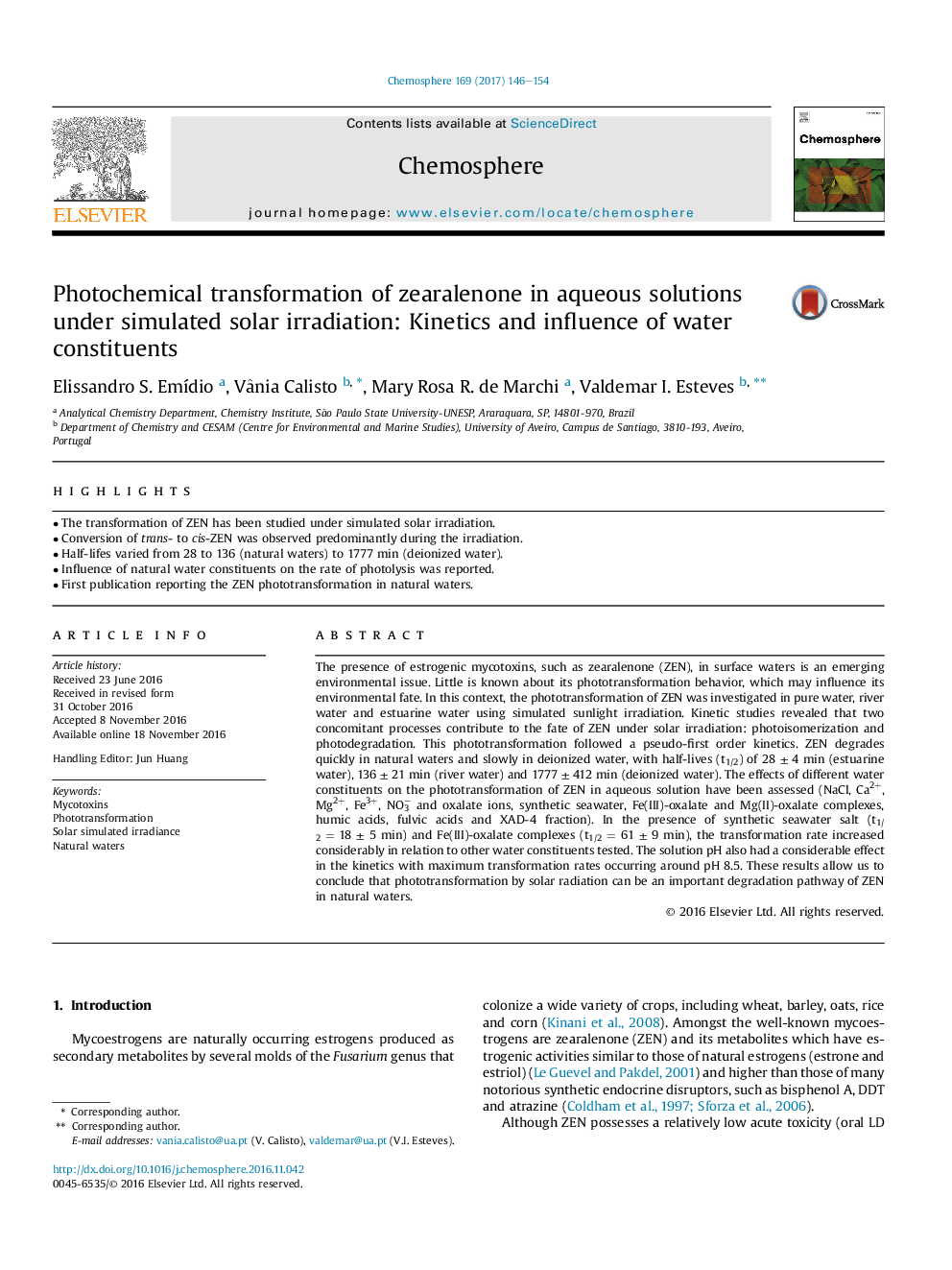| کد مقاله | کد نشریه | سال انتشار | مقاله انگلیسی | نسخه تمام متن |
|---|---|---|---|---|
| 5746976 | 1618802 | 2017 | 9 صفحه PDF | دانلود رایگان |

- The transformation of ZEN has been studied under simulated solar irradiation.
- Conversion of trans- to cis-ZEN was observed predominantly during the irradiation.
- Half-lifes varied from 28 to 136 (natural waters) to 1777Â min (deionized water).
- Influence of natural water constituents on the rate of photolysis was reported.
- First publication reporting the ZEN phototransformation in natural waters.
The presence of estrogenic mycotoxins, such as zearalenone (ZEN), in surface waters is an emerging environmental issue. Little is known about its phototransformation behavior, which may influence its environmental fate. In this context, the phototransformation of ZEN was investigated in pure water, river water and estuarine water using simulated sunlight irradiation. Kinetic studies revealed that two concomitant processes contribute to the fate of ZEN under solar irradiation: photoisomerization and photodegradation. This phototransformation followed a pseudo-first order kinetics. ZEN degrades quickly in natural waters and slowly in deionized water, with half-lives (t1/2) of 28 ± 4 min (estuarine water), 136 ± 21 min (river water) and 1777 ± 412 min (deionized water). The effects of different water constituents on the phototransformation of ZEN in aqueous solution have been assessed (NaCl, Ca2+, Mg2+, Fe3+, NO3â and oxalate ions, synthetic seawater, Fe(III)-oxalate and Mg(II)-oxalate complexes, humic acids, fulvic acids and XAD-4 fraction). In the presence of synthetic seawater salt (t1/2 = 18 ± 5 min) and Fe(III)-oxalate complexes (t1/2 = 61 ± 9 min), the transformation rate increased considerably in relation to other water constituents tested. The solution pH also had a considerable effect in the kinetics with maximum transformation rates occurring around pH 8.5. These results allow us to conclude that phototransformation by solar radiation can be an important degradation pathway of ZEN in natural waters.
Journal: Chemosphere - Volume 169, February 2017, Pages 146-154